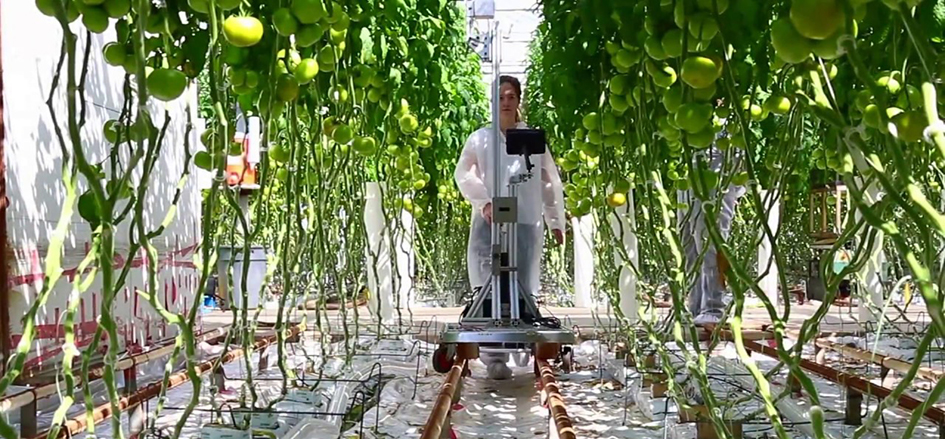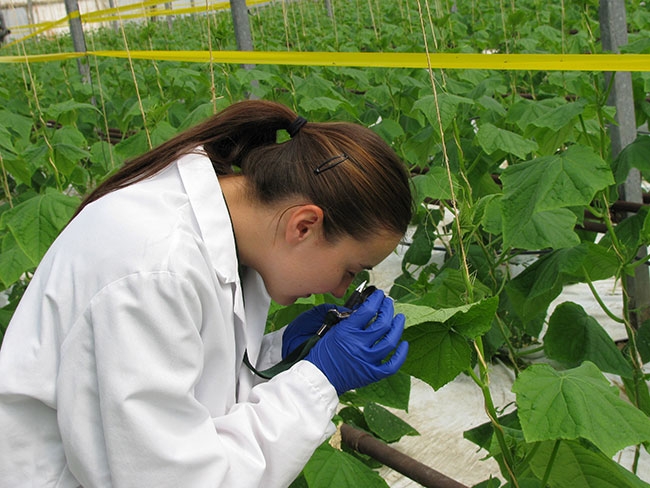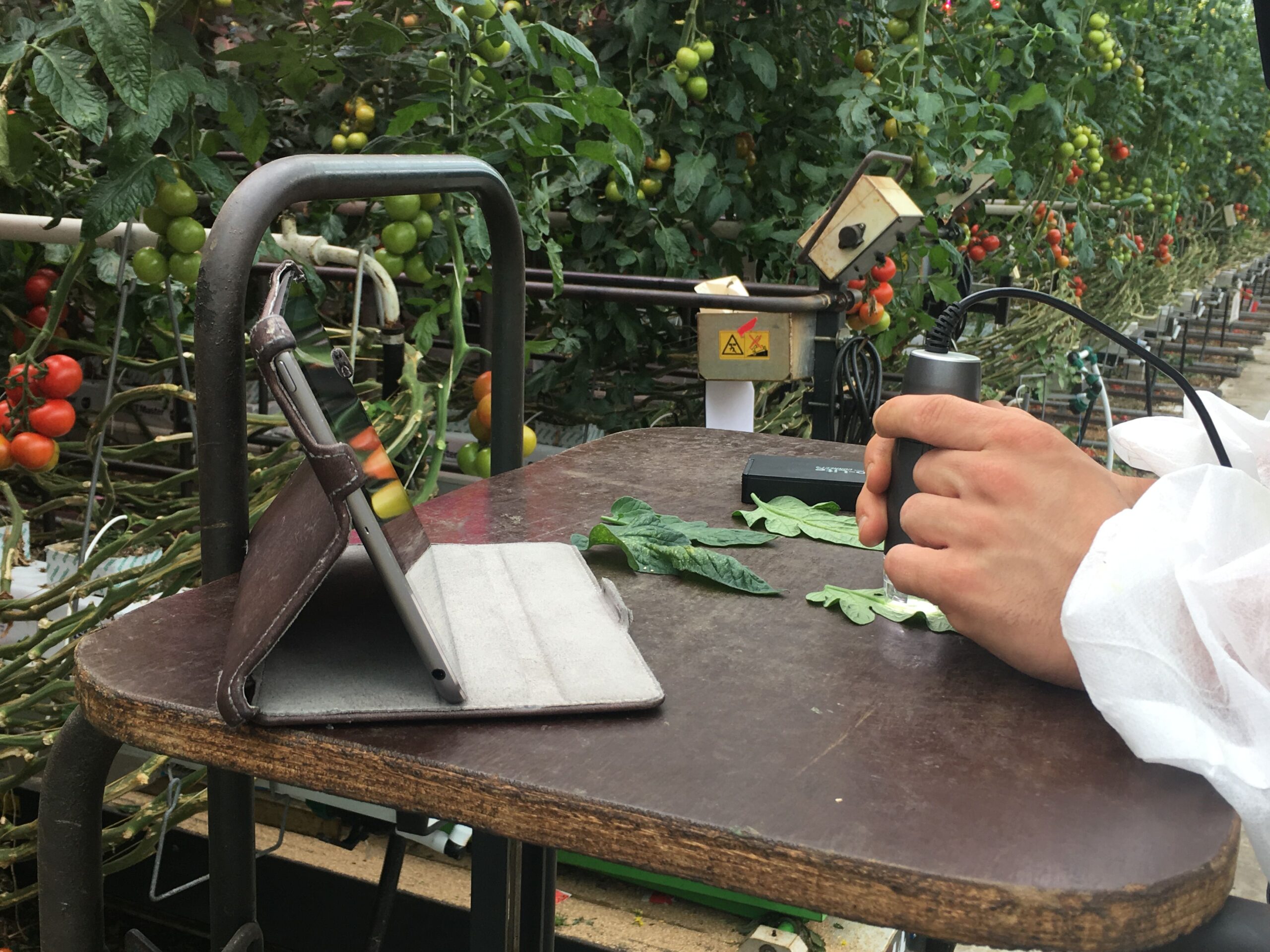Scouting is essential for growers to prevent disease outbreaks.

Preventing pest and disease outbreaks will save time and money. Although the best growers use every opportunity they have in the greenhouse to informally inspect things and take the “pulse” of the greenhouse environment and crops, a more formal and focused approach to scouting is essential. This article will focus on the fundamentals to any successful greenhouse scouting program.
Scouting should begin as early as possible in a growing cycle. For those bringing plant material such as seedling plugs and rooted cutting liners, plant material should be inspected immediately upon receipt; no plant should enter the greenhouse without this check. A small quarantine area, isolated from the main production area, is useful to keep plant material that appears questionable or affected.
In the main production area, effective scouting needs to occur throughout the entire area, and regularly. However, there are some strategies to making scouting effective and manageable. First, the main growing area should be divided into smaller subunits. Dividing the greenhouse into subunits corresponding to different crops is often a useful approach.
Plant scouting 101
Within each subunit, individual plants need to be inspected. Both random and targeted approaches to selecting plants for sampling are useful. A targeted approach should be taken for problematic areas or hot spots, those areas where pest and/or disease infestations are common. By purposefully focusing on well-known problem areas, you will be positioned to catch anything early. For the rest of the sampling area, randomly select plants from throughout each subunit.
Regular scouting is essential to proactive pest and disease management. So, how often should you scout? Well, the more often, the better.
Once plants have been selected to inspect, take a shoot-to-root approach. Thoroughly inspect the leaves, including both the leaf surface and underside. Look at the leaf axils, as this can be a common location for pests. Leaves from a variety of ages, from old to new, should be selected. Once shoots have been inspected, plants should be carefully removed from containers to observe root systems. The color of new and old roots is a simple way to assess relative root health, while specific symptoms such as dark- or off-colored roots and sluffing of older roots can be easy to see.
When scouting plants and trying to identify problematic symptoms of abiotic and biotic problems, it is important to know what “normal” looks like for the plants being scouted. What may appear like a symptom of some problem may be the actual appearance of the plant.
For example, think of different variegation patterns on foliage, or consider the kaleidoscope of colors and their patterns on coleus. It certainly isn’t hard for an untrained eye to interpret a desirable ornamental characteristic as a virus symptom- or vice-versa! Perhaps velamin, the white outer-layer of phalaenopsis orchid roots, could be mistaken for a fungal disease?

Scouting tools
In addition to inspecting plants, sticky cards are essential in making scouting for flying insects more successful. There are a few tips that will help make the most of sticky cards. First, make sure you are using enough sticky cards for target pests. For most pests, placing 4 to 5 cards per acre of growing area is sufficient. However, if whiteflies are a particular problem, up to 1 sticky card per 1,000 square feet of growing should be used. Sticky cards are available in both yellow and blue. While yellow is the all-around color choice for general purpose trapping, blue cards are more effective in attracting thrips.
There are a few more tools to make your scouting more effective and efficient. One of the most important tools for any scout is a hand lens or loupe. Utilizing this tool allows a grower to take a close-up look at any symptoms, signs and/or pests on the spot. A clipboard is useful not only for taking notes and keeping records, but for holding white paper to tap plants over for observing pests like thrips.
Use a simple cloth tool belt to hold spare sticky cards, plastic bags for samples, plastic gloves for handling potentially infectious materials, and other miscellaneous items. Back in the headhouse or other workspace, a dissecting microscope is useful for identifying those insects that are harder to identify, as well as to observe bacterial streaming or fungal structures. Keeping some enzyme-linked immunosorbent assay or ELISA kits on-hand can be useful to test symptomatic plant tissue.
Regular scouting is essential to proactive pest and disease management. So, how often should you scout? Well, the more often, the better. Determine what scouting frequency is sustainable and then maintain it with rigor Intervening early can minimize the negative effects of pests and diseases, and scouting provides you this opportunity. Additionally, by taking the information you learn from scouting throughout the year and using diligent record keeping, you will begin to put together larger trends in pests and diseases over time.












